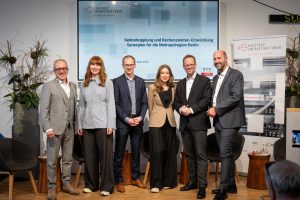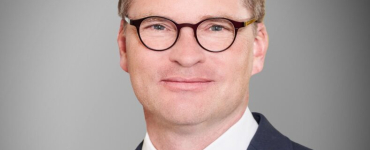On Wednesday, 9 April 2025, the first AllianzTalk, a discussion series hosted by the Alliance for Digital Infrastructure, took place at the Telefónica BASECAMP in Berlin. At almost exactly the same time, the coalition agreement between the CDU, CSU and SPD was presented not far away in the Paul-Löbe building – one more reason to look at the digital policy demands of the DC industry and discuss how regulation can be made more practical.
In his keynote speech, Dr Béla Waldhauser, spokesperson for the Alliance for the Strengthening of Digital Infrastructures in Germany, which was founded under the umbrella of the association, emphasised the importance of data centres for Germany as a digital location. After all, every industry – old or new – needs digital infrastructures. As examples, he cited the widespread adoption of mobile working since the Covid-19 pandemic, the increasing digitalisation in the field of administration, and the increased use of AI in companies of all kinds.
‘Well over 50 percent of what happens in data centres is business-related,’ said Waldhauser. It is therefore important to also pay political attention to this area and to point out the regulatory hurdles posed by, for example, NIS2, the German Energy Efficiency Act (EnEfG), the Energy Efficiency Directive or the DORA regulation. Ultimately, in order to be able to reliably provide digital processes in the economy and society, less bureaucracy and more speed are needed.
Klaus Müller, President of the German Federal Network Agency (BNetzA), sees data centres as a great opportunity for the energy system. The public authorities are interested in how companies can create flexibility on the production side that enables savings in the energy network. From a global perspective, according to Müller, we are talking here about a flexible output of 3.5 to 4 per cent across Germany in order to save on grid expansion. The public authorities see one possibility here in dynamic grid fees and capacity pricing – two concepts that they would like to discuss with representatives from industry in May.
The industry talk focused on the question of how data centres can contribute to tomorrow’s online world. The concept of sector coupling, i.e. the networking of sectors in the energy industry and industry in order to use energy in a sustainable way – for example in the area of heat utilisation and electricity availability – is central to this.
This was also the subject of the subsequent panel discussion, moderated by Sidonie Krug, Head of Association Communication at eco Association, in which Béla Waldhauser and Klaus Müller were joined by members of parliament Henri Schmidt (CDU) and Johannes Schätzl (SPD), as well as Steffen David, board member of SIBB e.V..
It became clear that sector coupling can only be successful if it is taken into account in legislation from the outset. For example, challenges still exist in the areas of waste heat utilisation, storage capacity and electricity availability, which hinder the achievement of the goals set out in the central laws. In the area of waste heat utilisation, for example, the fact that a data centre is not connected to the district heating network means that capacities are lost and not used.
The panellists agreed that decision-makers from the fields of politics, the energy industry and the DC sector must be brought together to solve the existing problems. This cannot be achieved by producing isolated solutions, but rather by thinking big – and, above all, by thinking of everything together.




